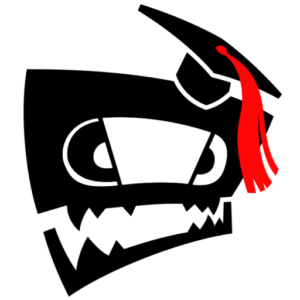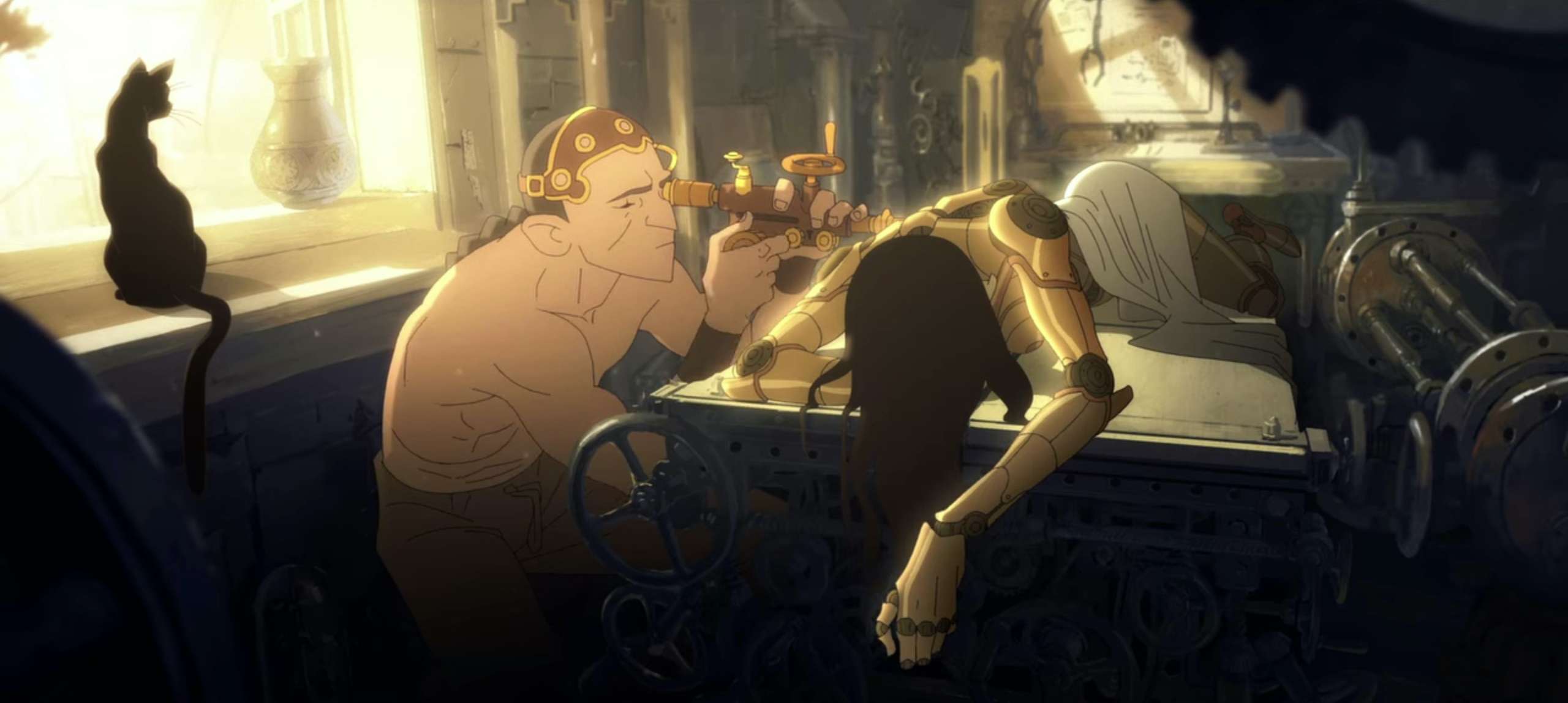Love, Death, and Robots is a Netflix original animated series that is very adult-oriented. It debuted in 2019 with a great selection of episodes from an amazing group of animators and animation styles, but it’s no kiddie stuff.
A major influence is Heavy Metal, the cult 1981 animated film that features lots of adult themes, blood and violence, plenty of horror, and a nice array of nudity.
The episode “Good Hunting” is a nice representation, while at the same time no one episode can represent the rest because they are all so different. Most of the episodes, including “Good Hunting,” were written by Tim Miller and Philip Gelatt but are adapted from short stories from various celebrated authors. I feel like with that, they purposely were able to span many different cultures and themes from one episode to the next. Much like Heavy Metal, which was one movie but flowed between science fiction, horror, and fantasy throughout in a diverse cacophony of animated splendor. And like with that film, it might be difficult to have a season of devilish short tales like Love, Death, and Robots has without the same people in the middle curating the stories in just the right way.
In “Good Hunting” we have an adaptation of a famous Chinese folk creature while implementing a very futuristic, science fiction twist.
The Huli Jing
The Huli Jing is a Chinese folk creature that dates back nearly 2,000 years. It is associated with the fox, but also is a shapeshifting creature. In Chinese mythology it is believed that all things can eventually take human form if it acquires a suitable amount of “energy” and so the Huli Jing could take human form if the circumstances dictated.
This nine-tailed fox is mentioned in many legends. It was considered part of a unique spiritual evolution.
When a fox is fifty years old, it can transform itself into a woman; when a hundred years old, it becomes a beautiful female… Such beings are able to know things at more than a thousand miles’ distance; they can poison men by sorcery, or possess and bewilder them, so that they lose their memory and knowledge; and when a fox is thousand years old, it ascends to heaven and becomes a celestial fox.
In the many stories, the Huli Jing often took this form, beautiful young women who could bewitch men. And often the stories used the legend as a not-so-subtle cautionary tale about prostitutes and the dangers of succumbing to their temptations.
I personally find a lot of parallels between these foxes and cat legends of other cultures. More specifically, the connection between cats, witchcraft, and the trickery of women. There is the Cat’s Paw tale of Bohemian lore that was featured in Scary Stories to Tell in the Dark. And many of these types of legends lead to such films as Cat People (1942) and Cat People (1982).
The Cat’s Paw comparison jumped right out at me in the opening scene of “Good Hunting” when a paw of the Huli Jing was sliced off.
— FAST FACTS —
- Directoral debut of long-time animation artist Oliver Thomas. He previously worked on such titles as Treasure Planet, Shark Tale, and Bee Movie.
- The original story was written by best-selling Chinese author Ken Liu.
- This episode of Love, Death, and Robots won an Emmy for Outstanding Individual in Animation for Background Design.
“Good Hunting” in Love, Death, and Robots
The story begins in rural China, where many of the stories of the dangerous Huli Jing are bound to take shape. And where conservative, old-fashion fathers undoubtedly see any kind of magic as dangerous.
When I was a child, the whole world was full of magic. My father was a spirit hunter, one of the brave men who protected humanity from spirits who hunted it.
And so we are treated to Liang and his father, hunting the seductive Huli Jing, killing men as they do. Liang comes across her youngling, who immediately forces him to question what is in fact happening. Are these Huli Jings the villains, or are they the victims?
Before he is able to make sense of it all, his father takes action, killing the adult Huli Jing in a bloody manner. And the grim reality of this fantasy his father has told him about over the years is directly in front of his face.
[image lightbox=”1″ caption=”Good Kill Hunting.”]https://www.scarystudies.com/wp-content/uploads/2021/03/kumiho-huli-jing-love-death-robots-lovecraft-country-4.jpg[/image]Time passes.
And the story becomes one of innovation, and change. And moving past the bleak legends of our childhoods. Our fathers and grandfathers would hate what the world has become, full of new technologies and new ways of thinking.
Technology is always changing. As it changed, I changed with it.
Liang grows accustomed to new technologies and the world that doesn’t quite have the same folklore and “magic” that he thought it did. In the animated world we are witnessing, it’s a futuristic Asian landscape full of a new type of hope, but with the same seedy underbelly that is bound to exist in any urban world. Liang and the Huli Jing creature Yan meet now that they are adults. As Yan says, the “magic is draining from the world.” Yan still seeks to battle the nasty men of the world. While Liang’s father saw the world as men against nature, Yan and now Liang see it as good versus evil. And evil can take the form of man or nature. Often man.
— FOUNDATIONS OF HORROR —
Further explore these subgenres & tropes. more>>
#Sex & gender horror | #Transformations are Transforming | #Science is Scary

What I love about this story is that the world changes, technology changes, but the fundamental struggles do not. Liang changes Yan to a robotic Huli Jing, one that has a new type of magic for this science fiction world they live in. It’s a fantastic metaphor for art. And a metaphor for women’s roles in society.
[image lightbox=”1″ caption=””]https://www.scarystudies.com/wp-content/uploads/2021/03/kumiho-huli-jing-love-death-robots-lovecraft-country-6.jpg[/image]It also has some interesting comments about Post-Colonialism and gender dynamics. Both Liang and Yan are subject to their “precious masters”, whether it is the English or all men. And they work together to fight their respective suppressors. Using the tools and “magic” they both have and define who they have become.
Last Updated on April 1, 2021.


1 Comment